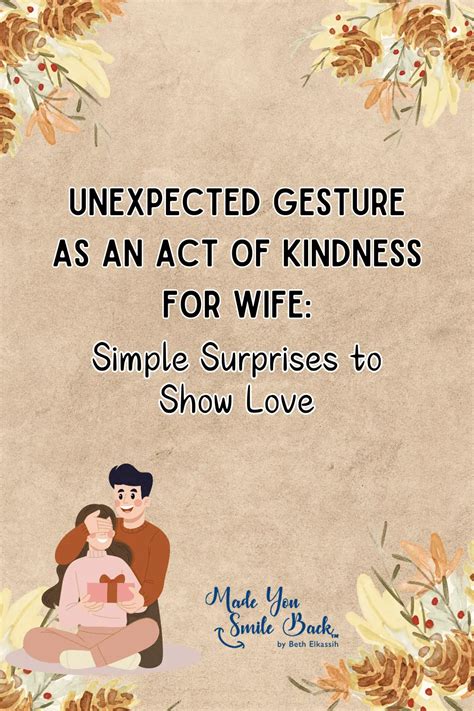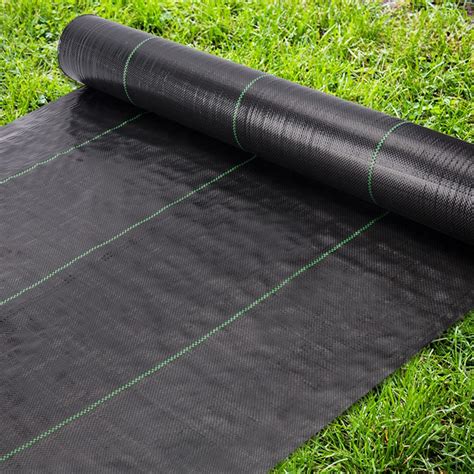
Vintage 1970s lamps, often overlooked in thrift stores, are experiencing a resurgence in popularity, offering both stylish design and potential investment value. Certain styles and brands are now highly sought after by collectors and design enthusiasts.
The 1970s are back, and not just in fashion. The era’s distinctive aesthetic is making a major comeback in interior design, with vintage lamps from the decade becoming increasingly desirable finds in thrift stores and antique shops. Experts say certain styles and manufacturers are particularly worth seeking out.
“There’s a big resurgence of interest in 1970s decor in general,” says Pam Kueber, founder of Retro Renovation, a website dedicated to mid-century and vintage home design. “Lamps are a great way to introduce that vibe into your home without a major commitment.”
Identifying Valuable 1970s Lamps
Several factors determine the value and desirability of 1970s lamps. These include the manufacturer, design, materials, and overall condition.
- Manufacturer: Certain manufacturers, such as Laurel Lamp Company, Modeline of California, and Robert Sonneman’s Sonneman Lighting, are known for their high-quality designs and command higher prices in the vintage market. Identifying the maker’s mark or label on the lamp is crucial.
- Design: Lamps with unique and innovative designs are more likely to be valuable. Look for distinctive shapes, materials, and features that characterize the 1970s aesthetic.
- Materials: Common materials used in 1970s lamps include brass, chrome, glass, ceramic, wood, and plastic. Lamps made with high-quality materials and unique combinations of materials tend to be more valuable.
- Condition: The condition of the lamp is a critical factor in determining its value. Lamps in excellent condition, with minimal wear and tear, are more desirable. However, even lamps with minor imperfections can be valuable if they are rare or highly sought after. Original wiring should always be checked and potentially replaced by a professional for safety.
Popular Styles and Designs
Several lamp styles and designs from the 1970s are particularly popular among collectors and design enthusiasts.
- Mushroom Lamps: These lamps, characterized by their rounded, mushroom-shaped shades, were a popular design trend in the 1970s. They often feature a simple, minimalist design and are available in various colors and materials.
- Chrome Lamps: Chrome lamps were another popular choice in the 1970s, reflecting the era’s fascination with modern materials and industrial design. These lamps often feature sleek, geometric shapes and a polished chrome finish.
- Brass Lamps: Brass lamps offered a warmer, more luxurious alternative to chrome lamps. They often feature ornate designs and are available in various styles, from traditional to contemporary.
- Ceramic Lamps: Ceramic lamps were a versatile option in the 1970s, available in various colors, shapes, and textures. They often feature hand-painted designs or unique glazes, adding a touch of artistry to any room.
- Torchiere Lamps: Torchiere lamps, also known as floor lamps, provided ambient lighting and added a dramatic touch to any room. They often feature tall, slender designs and upward-facing shades.
- Space Age Lamps: Reflecting the futuristic optimism of the era, Space Age lamps often incorporated unconventional materials like plastic and featured bold, geometric shapes reminiscent of spaceships and satellites.
- Lava Lamps: Though technically dating back to the 1960s, lava lamps remained a popular lighting choice throughout the 1970s, adding a groovy, psychedelic vibe to any space.
Where to Find Vintage 1970s Lamps
Vintage 1970s lamps can be found in various places, including:
- Thrift Stores: Thrift stores are a great place to find affordable vintage lamps. However, it’s essential to carefully inspect the lamps for any damage or wear and tear.
- Antique Stores: Antique stores offer a more curated selection of vintage lamps, but prices may be higher than in thrift stores.
- Estate Sales: Estate sales can be a treasure trove of vintage finds, including 1970s lamps.
- Online Marketplaces: Online marketplaces such as eBay, Etsy, and Chairish offer a wide selection of vintage lamps from various sellers. However, it’s essential to carefully review the seller’s reputation and the lamp’s condition before making a purchase.
- Flea Markets: Flea markets can be a great place to find unique and unusual vintage lamps.
The Allure of 1970s Design
The resurgence of interest in 1970s design reflects a broader trend of nostalgia and a desire for authenticity and individuality. The 1970s were a time of great social and cultural change, and the design of the era reflected this spirit of experimentation and innovation.
“People are tired of the same old mass-produced furniture and decor,” says Mark Stevens, an interior designer specializing in vintage design. “They’re looking for unique pieces that tell a story and add character to their homes.”
1970s design also offers a sense of warmth and comfort, with its earthy tones, natural materials, and organic shapes. This is in contrast to the sleek, minimalist designs that have dominated contemporary interiors in recent years.
“The 1970s were a time of comfort and relaxation,” says Lisa Johnson, a vintage furniture collector. “People wanted their homes to be a sanctuary from the outside world, and the design of the era reflected this.”
Investing in Vintage 1970s Lamps
While many people are drawn to vintage 1970s lamps for their aesthetic appeal, they can also be a worthwhile investment. As demand for vintage items continues to grow, the value of certain 1970s lamps is likely to increase over time.
“Lamps from well-known manufacturers like Laurel and Sonneman are always a good investment,” says John Anderson, an antique dealer specializing in vintage lighting. “But even lesser-known brands can be valuable if the design is unique and the condition is good.”
However, it’s essential to do your research before investing in vintage 1970s lamps. Consider the lamp’s manufacturer, design, materials, and condition. It’s also a good idea to consult with an antique dealer or vintage lighting expert to get their opinion on the lamp’s value and potential for appreciation.
Safety Considerations
When buying vintage lamps, safety is paramount. Electrical components degrade over time, and old wiring can be a fire hazard.
- Check the wiring: Examine the wiring for any signs of damage, such as cracks, fraying, or exposed wires. If the wiring appears to be in poor condition, have it replaced by a qualified electrician.
- Inspect the socket: Check the socket for any cracks or damage. Make sure the socket is the correct type for the bulb you plan to use.
- Test the lamp: Before using the lamp, plug it into a grounded outlet and test it to ensure it is working correctly.
- Use the correct bulb: Use the correct type and wattage of bulb for the lamp. Using the wrong bulb can overheat the lamp and create a fire hazard.
- Consider rewiring: If you are unsure about the safety of the lamp, have it rewired by a qualified electrician. Rewiring can ensure that the lamp is safe to use and will last for many years to come.
The Enduring Appeal
The resurgence of interest in vintage 1970s lamps highlights the enduring appeal of the era’s design. These lamps offer a unique blend of style, comfort, and character that is hard to find in mass-produced contemporary lighting. Whether you’re a collector, a design enthusiast, or simply looking for a unique way to add personality to your home, vintage 1970s lamps are worth considering. They represent a tangible link to a bygone era and offer a sustainable and stylish alternative to modern lighting options. They also spark conversations and bring a sense of history and individuality to any space. As trends continue to evolve, the timeless appeal of well-designed and well-preserved 1970s lamps will likely ensure their continued popularity and value. The key is to educate oneself, be discerning in selection, and prioritize safety when incorporating these vintage treasures into modern living spaces. The warm glow of a vintage 1970s lamp can not only illuminate a room but also evoke a sense of nostalgia and appreciation for a distinctive design era.
The renewed interest isn’t limited to specific lamp types but extends to the broader design philosophy of the decade. The ’70s were characterized by a departure from the rigid formalism of mid-century modernism, embracing instead a more organic and eclectic aesthetic. This included warm color palettes, natural textures, and a sense of relaxed comfort. Lamps, as essential elements of interior décor, played a significant role in shaping this atmosphere. From the earthy tones of ceramic bases to the shimmering reflections of chrome finishes, 1970s lamps embodied the era’s distinctive style. Their resurgence reflects a broader desire for authenticity, individuality, and a connection to the past. Moreover, the growing awareness of sustainability and responsible consumption has contributed to the popularity of vintage and repurposed items. By choosing a vintage 1970s lamp, consumers can reduce their environmental footprint and give new life to a piece of design history.
The trend also highlights a shift in consumer preferences, with many individuals seeking to personalize their living spaces and create unique, curated environments. Mass-produced furniture and décor often lack character and fail to reflect individual tastes. Vintage items, on the other hand, offer a sense of history, craftsmanship, and individuality that cannot be replicated by contemporary designs. A vintage 1970s lamp can serve as a focal point in a room, adding personality and sparking conversations. Its unique design and patina tell a story, connecting the present with the past. This desire for authenticity and individuality is driving the demand for vintage items across various categories, from furniture and lighting to clothing and accessories.
Furthermore, the accessibility of online marketplaces and social media platforms has made it easier than ever to discover and acquire vintage 1970s lamps. Platforms like eBay, Etsy, and Instagram provide a global stage for sellers to showcase their vintage finds, connecting them with buyers from around the world. Social media has also played a crucial role in popularizing vintage design, with influencers and design enthusiasts sharing their favorite vintage pieces and inspiring others to embrace the trend. The online community provides a valuable resource for learning about vintage design, identifying valuable pieces, and connecting with other collectors and enthusiasts.
Expanded Insights on Specific Lamp Styles:
- Mushroom Lamps: Often crafted from Murano glass or similar materials, the diffused light from mushroom lamps creates a soft, ambient glow that is both functional and aesthetically pleasing. Their minimalist design makes them versatile additions to a variety of interior styles, from mid-century modern to contemporary. The value of mushroom lamps can vary significantly depending on the designer, material, and condition.
- Chrome Lamps: Chrome lamps, particularly those with geometric designs, epitomize the sleek, futuristic aesthetic of the 1970s. They were often paired with bold colors and patterns to create a visually striking contrast. When selecting a chrome lamp, look for pieces with minimal scratches and corrosion, as these can detract from their value and appearance.
- Brass Lamps: Brass lamps offer a warmer and more luxurious alternative to chrome, adding a touch of elegance and sophistication to any room. They were often used in more traditional or formal settings, but can also be incorporated into contemporary designs for a touch of vintage charm. The patina of aged brass can add character and depth, but excessive tarnish should be addressed with appropriate cleaning methods.
- Ceramic Lamps: The versatility of ceramic allowed for a wide range of designs, from earthy and organic forms to bold and geometric shapes. Hand-painted designs and unique glazes added an artistic touch, making each lamp a unique work of art. When purchasing a ceramic lamp, inspect it carefully for any cracks or chips, as these can significantly reduce its value.
- Torchiere Lamps: Torchiere lamps were popular for their ability to provide ambient lighting and create a dramatic effect. Their tall, slender designs made them ideal for filling vertical space and adding height to a room. They were often used in living rooms and bedrooms to create a warm and inviting atmosphere.
- Space Age Lamps: The Space Age aesthetic, inspired by the era’s fascination with space exploration, resulted in lamps that were both functional and sculptural. These lamps often incorporated unconventional materials like plastic and featured bold, geometric shapes reminiscent of spaceships and satellites. Their unique designs make them highly sought after by collectors and design enthusiasts.
- Lava Lamps: While originally introduced in the 1960s, lava lamps remained a popular lighting choice throughout the 1970s, adding a groovy, psychedelic vibe to any space. Their mesmerizing motion and vibrant colors made them a quintessential symbol of the era. While not necessarily valuable from an investment standpoint, lava lamps remain a fun and nostalgic addition to any vintage-inspired décor.
Beyond Aesthetics: The Sustainability Factor
The increasing popularity of vintage 1970s lamps isn’t solely driven by aesthetics. A growing awareness of environmental issues is prompting consumers to embrace sustainable practices, and purchasing vintage items is a tangible way to reduce their carbon footprint. By choosing a vintage lamp, consumers are extending the lifespan of an existing product, diverting it from landfills and reducing the demand for new manufacturing. This aligns with the principles of circular economy, which aims to minimize waste and maximize resource utilization.
Moreover, the manufacturing of new lighting fixtures often involves energy-intensive processes and the use of potentially harmful materials. By opting for a vintage lamp, consumers can avoid contributing to these environmental impacts. Vintage items also tend to be more durable and well-made than their mass-produced counterparts, ensuring a longer lifespan and reducing the need for frequent replacements.
Caring for Your Vintage 1970s Lamp
Proper care and maintenance are essential for preserving the value and extending the lifespan of your vintage 1970s lamp. Here are some tips to keep your lamp in top condition:
- Dust Regularly: Use a soft cloth to dust the lamp regularly, preventing the buildup of dirt and grime.
- Clean Gently: For more thorough cleaning, use a mild soap and water solution. Avoid harsh chemicals or abrasive cleaners, as these can damage the lamp’s finish.
- Protect from Sunlight: Prolonged exposure to direct sunlight can fade the lamp’s colors and damage its materials. Position the lamp away from direct sunlight or use window coverings to protect it.
- Handle with Care: When moving the lamp, handle it with care to avoid dropping or damaging it.
- Store Properly: If you need to store the lamp, wrap it carefully in protective materials and store it in a cool, dry place.
- Professional Cleaning: For delicate or valuable lamps, consider professional cleaning by a qualified antique restorer.
The Investment Potential: Factors to Consider
While the primary motivation for purchasing a vintage 1970s lamp may be aesthetic, it’s worth considering its potential investment value. However, not all vintage lamps are created equal, and several factors can influence their appreciation over time.
- Rarity: Rare and hard-to-find lamps are more likely to increase in value. Look for lamps with unique designs, limited production runs, or historical significance.
- Condition: The condition of the lamp is crucial. Lamps in excellent condition, with minimal wear and tear, are more desirable to collectors.
- Provenance: Knowing the lamp’s history and origin can add to its value. Lamps with documented provenance, such as those previously owned by famous individuals or featured in significant design publications, are particularly valuable.
- Demand: The demand for specific styles and designers can fluctuate over time. Research current trends and consult with antique dealers or vintage lighting experts to get their opinion on the lamp’s potential for appreciation.
- Authenticity: Ensure that the lamp is authentic and not a reproduction. Look for maker’s marks, labels, and other indicators of authenticity.
The Role of Online Marketplaces and Social Media:
Online marketplaces like eBay, Etsy, and Chairish have revolutionized the way vintage items are bought and sold. These platforms provide a global marketplace for sellers to reach a wider audience and for buyers to discover unique and hard-to-find items. Social media platforms like Instagram and Pinterest have also played a significant role in popularizing vintage design, with influencers and design enthusiasts sharing their favorite vintage pieces and inspiring others to embrace the trend.
These online platforms have made it easier than ever to research vintage lamps, compare prices, and connect with other collectors and enthusiasts. However, it’s important to exercise caution when buying vintage items online, as it can be difficult to assess their condition and authenticity without seeing them in person. Always review the seller’s reputation and ask for detailed photos and descriptions before making a purchase.
The Future of Vintage 1970s Design:
The resurgence of interest in vintage 1970s lamps is likely to continue in the coming years, driven by a combination of factors, including nostalgia, sustainability, and the desire for individuality. As more people seek to personalize their living spaces and connect with the past, vintage 1970s design will continue to offer a compelling alternative to mass-produced contemporary items.
The key to successfully incorporating vintage 1970s lamps into modern interiors is to balance the old with the new, creating a cohesive and harmonious design. Mix vintage lamps with contemporary furniture and accessories to create a unique and personalized space that reflects your individual style.
5 Frequently Asked Questions (FAQ)
Q1: What are some of the most valuable 1970s lamp brands to look for in thrift stores?
A1: According to experts, look for lamps from manufacturers like Laurel Lamp Company, Modeline of California, and Sonneman Lighting (Robert Sonneman). These brands are known for their quality and design, often commanding higher prices in the vintage market. Identifying the maker’s mark or label is key.
Q2: How can I tell if a vintage lamp is safe to use, and what safety precautions should I take?
A2: Always check the wiring for damage like cracks or fraying. Inspect the socket for any damage. It’s recommended to have the lamp rewired by a qualified electrician, especially if you’re unsure of its safety. Ensure you use the correct type and wattage of bulb. If in doubt, consult a professional.
Q3: Besides thrift stores, where else can I find vintage 1970s lamps?
A3: Apart from thrift stores, you can find them at antique stores, estate sales, online marketplaces like eBay, Etsy, and Chairish, and flea markets. Online, be sure to carefully review the seller’s reputation and the lamp’s condition before buying.
Q4: What design characteristics define a typical valuable 1970s lamp?
A4: Look for distinctive shapes like mushroom lamps, materials such as brass, chrome, ceramic, wood, and unique combinations thereof. Also, innovative and unusual designs are more likely to be valuable. Pay attention to the overall condition of the lamp; minimal wear and tear are desirable.
Q5: Is buying a vintage 1970s lamp a good investment, and what factors should I consider before investing?
A5: Vintage 1970s lamps can be a worthwhile investment, especially those from well-known manufacturers. Consider the lamp’s manufacturer, design, materials, condition, and rarity. Consult with an antique dealer or vintage lighting expert to assess its potential for appreciation. Remember to do your research before making a purchase.









